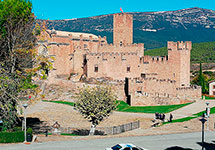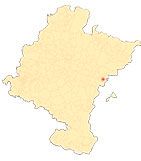Javier, a castle for a saint
Introduction
The castle of Javier is the oldest civil monument of Navarre that remains standing. It has survived more than 1,000 years, since its central nucleus, the keep, was erected in the second half of the X century. As Christian Europe grew, the castle was enlarged until it was fully configured in the first quarter of the 13th century. It also became the center of a lordship and the seat of a noble family. In 1237 the castle and the whole area were given to the Aznárez de Sada family, who together with other families that succeeded them have constituted a lineage of 29 generations.
The civil war between the Beaconteses and the Agramonteses led to the destruction of a large part of the castle in 1455. During the last third of the 15th century, the Azpilcueta and Jaso families set about rebuilding it, maintaining the architectural elements that defined it, but rebuilding them on a larger scale and adding other complementary elements, so that at the beginning of the 16th century, the castle of Javier reached its maximum and ephemeral splendour.
It was then that it was the birthplace of Saint Francis Xavier (1506-1552), a fact that conditioned all the subsequent evolution of the castle and has enabled it to survive to the present day. The saint's missionary activity in India, the Moluccas and Japan, the influence of his letters and the spread of his thaumaturgic activity made him the patron saint of Navarre and of the Catholic missions, as well as spreading his cult and devotion throughout the Catholic Church.
In the meantime, the castle, partially demolished and stripped of its defences (1516), began a slow decline, which was accentuated when in the second half of the 16th century its lords ceased to reside there permanently, often being replaced by administrators, and continued until the end of the 19th century. At the same time, the beatification and canonisation of Saint Francis Xavier (1619-1622) added a new function to the castle; while remaining the centre of a seigniorial exploitation, it became a place of worship, a function that required transforming part of the building to make room for two successive chapels (1619, 1684).
The fate of the castle changed when María del Carmen Azlor de Aragón, 15th Duchess of Villahermosa, decided to restore it and build a basilica and a high school (1891-1904), which she gave to the Society of Jesus. Over the course of a century, two other major restorations of the building and the remodelling of its surroundings have taken place, made possible by the combination of three elements: the presence of the Society of Jesus, the development of pilgrimages (especially the Javieradas), and the partnership and munificence of the Diputación Foral de Navarra, today the Government of Navarre. The result of this effort is the castle-sanctuary of the present day, the essential features of which will be outlined, at least briefly, in the following ten images.












